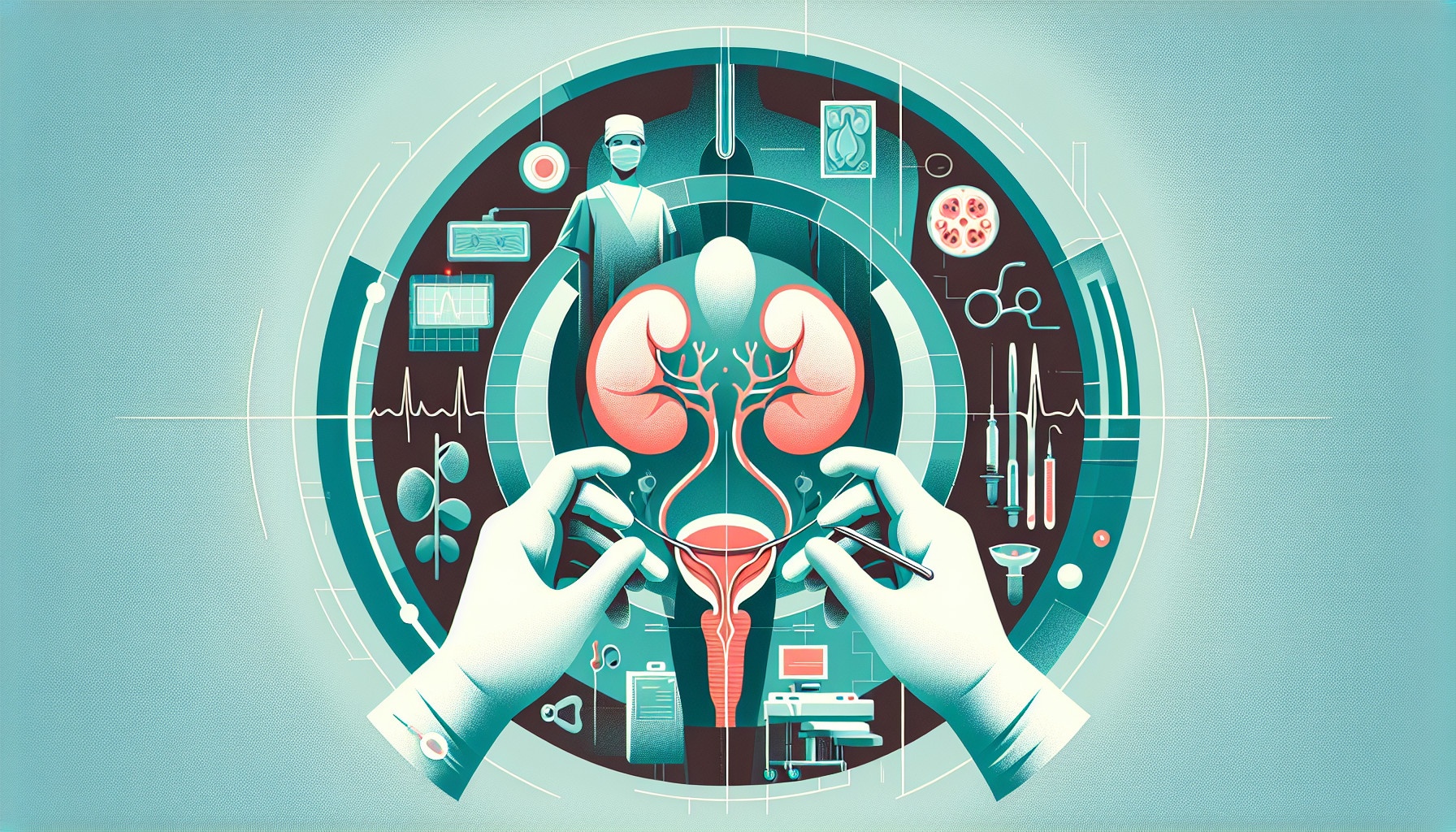Our Summary
This study looked at the value of routinely using a type of X-ray called a cystogram after bladder repair during colorectal surgery. The researchers reviewed the medical records of patients who had colorectal surgery and a cystogram at the Norfolk and Norwich University Hospital between 2006 and 2011. They found that 92% of the surgeries involved the bladder. The most common reasons for the surgeries were diverticular disease and cancer. All the patients had at least one cystogram after their surgery, but only 46% had instructions for a cystogram in their surgical notes. Out of 59 operations, 4 showed a leak in the bladder on the cystogram. However, no additional procedures were needed as further cystograms showed no leak or a smaller leak. The researchers concluded that most cystograms are negative and more studies are needed to determine if the use of cystograms should be more selective to reduce unnecessary exposure to radiation and contrast.
FAQs
- What is the purpose of using a cystogram after bladder repair during colorectal surgery?
- What percentage of patients had instructions for a cystogram in their surgical notes in the study?
- Did the study find any significant leaks in the bladder using the cystogram method?
Doctor’s Tip
One helpful tip a doctor might give to a patient about bladder surgery is to follow all post-operative instructions carefully, including any recommendations for follow-up tests such as a cystogram. This test can help detect any potential issues with the bladder repair and ensure proper healing. It is important to communicate with your healthcare provider if you experience any unusual symptoms or changes after the surgery.
Suitable For
Patients who are typically recommended bladder surgery include those with conditions such as diverticular disease, cancer, urinary incontinence, bladder stones, bladder tumors, urinary retention, and interstitial cystitis. Bladder surgery may also be recommended for patients with recurrent urinary tract infections, bladder prolapse, or neurogenic bladder dysfunction. Ultimately, the decision to undergo bladder surgery is based on the individual patient’s specific condition and symptoms, as well as the risks and benefits of the procedure.
Timeline
Before bladder surgery:
- Patient consults with a urologist or other healthcare provider to discuss symptoms and potential treatment options.
- Patient undergoes various tests, such as urine tests, blood tests, and imaging studies, to determine the cause of their bladder issues.
- Based on the results of these tests, the healthcare provider recommends bladder surgery as a treatment option.
- Patient schedules the surgery and receives pre-operative instructions, including fasting guidelines and medication adjustments.
- On the day of the surgery, the patient undergoes anesthesia and the surgical procedure to repair or remove the affected part of the bladder.
After bladder surgery:
- Patient wakes up in the recovery room and is monitored closely by healthcare providers for any complications.
- Patient may experience pain, discomfort, and urinary symptoms in the days following the surgery.
- Patient is discharged from the hospital and given instructions for at-home care, including wound care, medication management, and follow-up appointments.
- Patient may need to undergo additional tests, such as a cystogram, to ensure that the bladder repair was successful and there are no leaks or complications.
- Patient gradually resumes normal activities and follows up with their healthcare provider for ongoing monitoring and management of their bladder condition.
What to Ask Your Doctor
- What type of bladder surgery is being recommended for me?
- What are the potential risks and complications of the surgery?
- How long is the recovery process expected to be?
- Will I need to have a cystogram after the surgery? If so, how many and how often?
- What are the potential risks of having a cystogram, such as exposure to radiation and contrast?
- How will the results of the cystogram impact my post-operative care?
- What are the signs and symptoms I should watch for that may indicate a complication with the bladder repair?
- Are there any alternative treatments or procedures that I should consider before deciding on bladder surgery?
- How experienced are you in performing this type of bladder surgery?
- What is the success rate of this type of bladder surgery for patients with similar conditions to mine?
Reference
Authors: Kwok CS, Pal A, Sargen K. Journal: ANZ J Surg. 2015 Oct;85(10):774-6. doi: 10.1111/ans.12440. Epub 2013 Nov 14. PMID: 24224778
